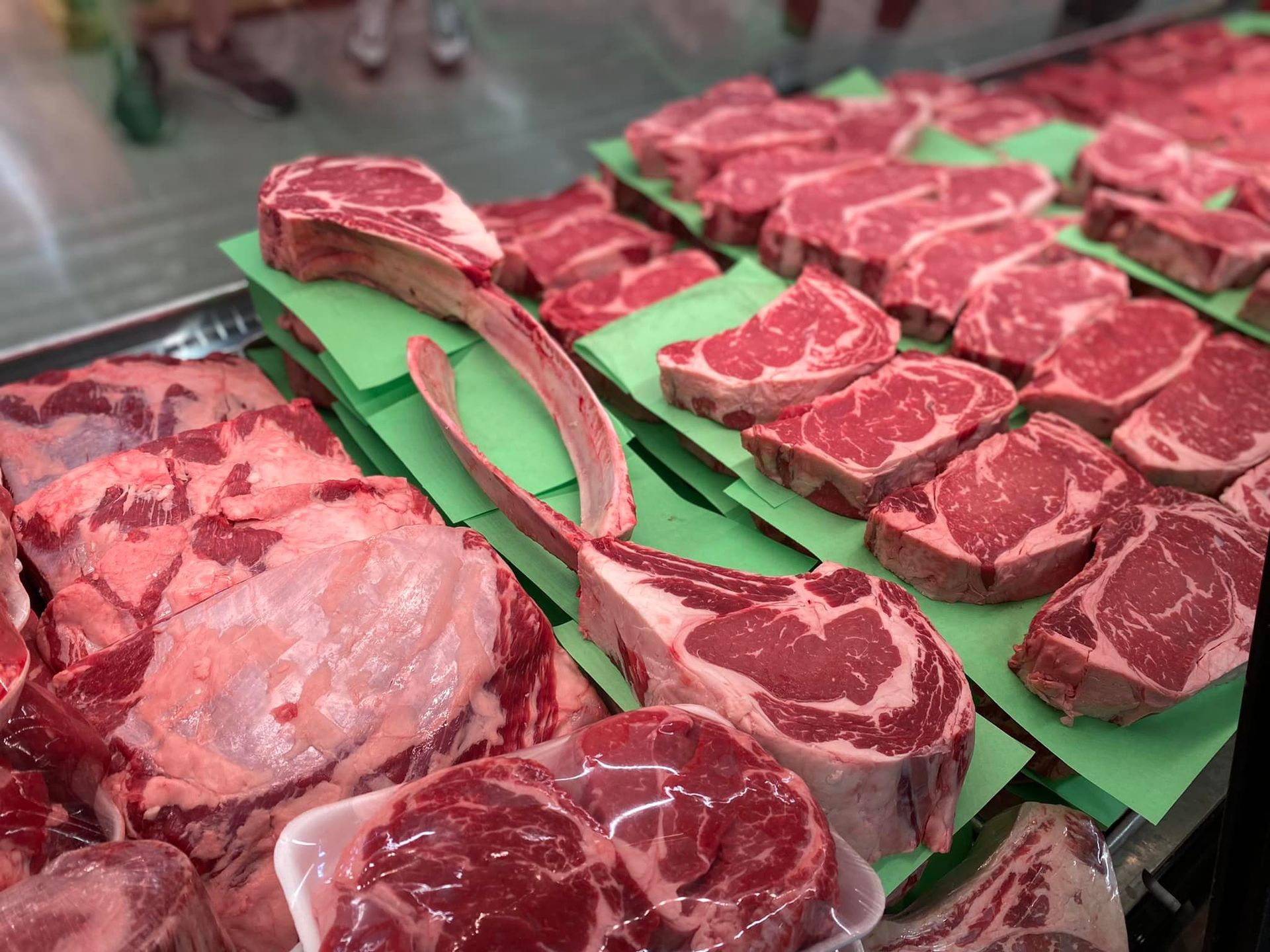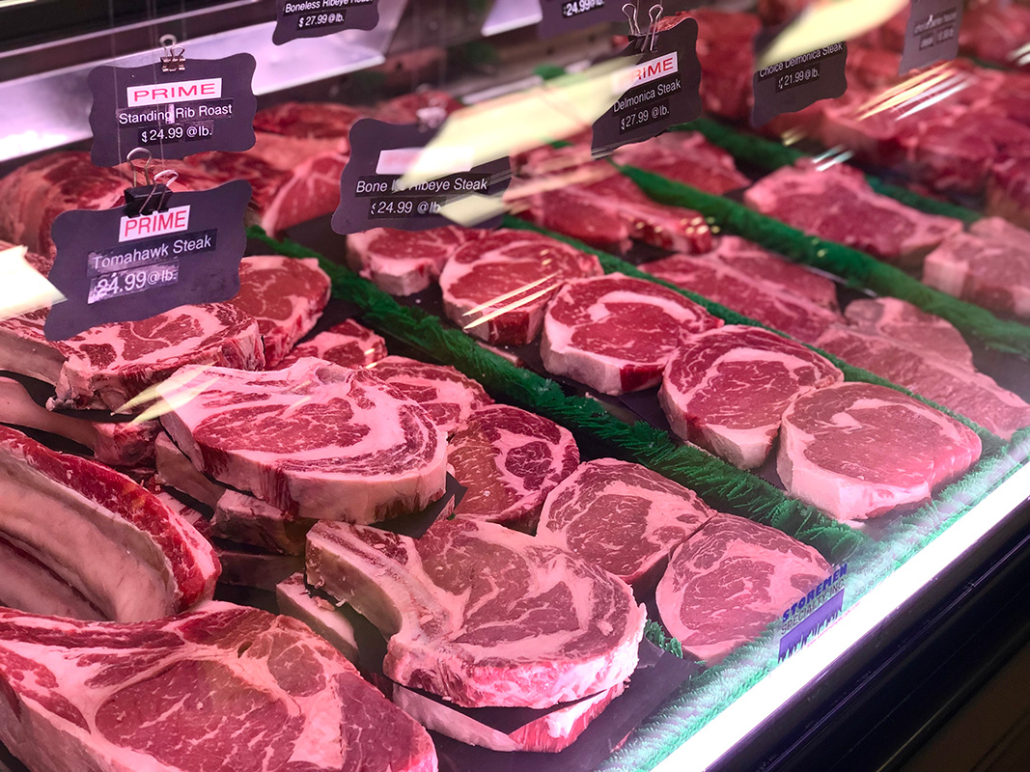Why Locals Love Bagley Farms Meat Market Edwardsville IL for Their Meat Shopping
Why Locals Love Bagley Farms Meat Market Edwardsville IL for Their Meat Shopping
Blog Article
Reveal the Art of the Butcher's Cut in a Modern Meat Market
In the ever-evolving landscape of contemporary meat markets, the butcher's cut has transcended its conventional origins, merging old-time craftsmanship with modern practices. What truly establishes the modern-day butcher apart is their ability to create a deeper link between customers and the origins of their meat.
Evolution of Butchery Strategies

The mid-20th century saw butchery strategies additionally refined by scientific understandings into muscle mass biology and meat aging, enhancing both inflammation and preference. Technologies like vacuum product packaging and refrigeration extended item shelf-life, enabling butchers to diversify offerings and enhance top quality control. This duration also noted the surge of customized tools, such as band saws and meat slicers, which raised precision and effectiveness in meat processing.
Computerized systems now aid in tracking animal provenance and maximizing cuts to fulfill details customer choices. Furthermore, a renewal in artisanal butchery has actually arised, mixing traditional abilities with modern-day expertise to cater to customers looking for moral and sustainable meat options.

Recognizing Meat Cuts

Comprehending the complexities of meat cuts is necessary for both butchers and customers looking for high quality and worth. Each cut comes from a different component of the animal, imparting distinct tastes, structures, and cooking approaches. Proficiency of these differences not only boosts culinary experiences however additionally maximizes the utility of each carcass. For butchers, specific cuts reflect ability and respect for the craft, guaranteeing minimal waste and ideal yield.
The key categories of meat cuts include primitive, sub-primal, and retail cuts. Primitive cuts, such as the loin, rib, and chuck, are the big sections initially divided from the carcass. Butchers then damage these down better into sub-primal cuts, prior to ultimately creating retail cuts offered to consumers, like ribeye or tenderloin. Each phase needs careful interest to physiological framework and muscle mass structure.
Understanding muscular tissue structure is important; muscle mass made use of more regularly by the pet tend to be tougher and are best fit for sluggish food preparation approaches, while less-used muscular tissues, like those located in the loin, are more tender and suitable for barbecuing or roasting. Knowledge with these distinctions encourages customers to make informed choices, enhancing their cooking endeavors.
Choosing Quality Meat
Choosing the best meat includes more than simply choosing an aesthetically enticing piece from the display. The art of selecting high quality meat needs a discerning eye and knowledge of particular qualities that indicate quality and excellence.
Second of all, consider the marbling, which describes the white flecks of fat within the muscle mass. Correct marbling is a key indication of tenderness and taste, as it thaws during food preparation, enhancing the meat's juiciness. Bear in mind, greater marbling often correlates with superior high quality cuts, such as USDA Prime.
Structure is an additional vital aspect; meat should feel firm to the touch, not slimed or overly soft. Additionally, bear in mind the scent. Fresh meat needs to have a clean, neutral scent, without any Read More Here kind of sour or repulsive smells.
Matching Cuts With Cooking Methods
Efficiently combining cuts of meat with the proper cooking methods is necessary for achieving optimum taste and texture. These methods improve the meat's natural flavors and ensure a juicy surface.
Conversely, tougher cuts like brisket and chuck roast are rich in collagen, which breaks down right into jelly when prepared gradually. These cuts are ideal for braising or slow-moving roasting, permitting the meat to soften with time and establish deep, complex flavors. Likewise, cuts such as short ribs and pork shoulder make out well with slow-cooking techniques, where extended cooking times transform visit the website their robust structures right into succulent meals.
Lamb shanks and oxtail, which require long term food preparation to soften, are ideal candidates for stewing or sluggish simmering. These techniques coax out rich, passionate tastes while preserving wetness. By understanding the distinct characteristics of each cut, cooks and home chefs alike can elevate their cooking developments, making sure each meal is both pleasing and remarkable.
The Butcher's Role Today
Browsing the progressing landscape of the contemporary meat market, the butcher's duty today expands past mere prep work of cuts. Contemporary butchers are culinary artisans, instructors, and advocates for sustainable methods.
In addition to crafting accurate cuts, butchers currently involve straight with customers, offering cooking guidance and customizing choices to fit specific demands and preferences. Their expertise in meat aging, marbling, and flavor profiles encourages consumers to make educated decisions, boosting their cooking experiences. This individualized service exemplifies the butcher's developing duty as a relied on consultant in the kitchen area.
Additionally, butchers are pivotal in decreasing waste, making use of whole pets to produce diverse items such as sausages and supplies - bagley farms meat market edwardsville il. This extensive technique not only appreciates the pet however also lines up with contemporary sustainability goals. In this means, the contemporary butcher symbolizes both tradition and technology, adapting to an ever-changing market while protecting the virtuosity and stability of their craft

Conclusion
Mastery in comprehending diverse meat cuts and top quality signs empowers butchers to offer educated referrals, lining up image source specific cuts with optimal food preparation approaches. By honoring historic techniques while embracing modern demands, the butcher's role remains essential in today's advanced meat market.
Report this page